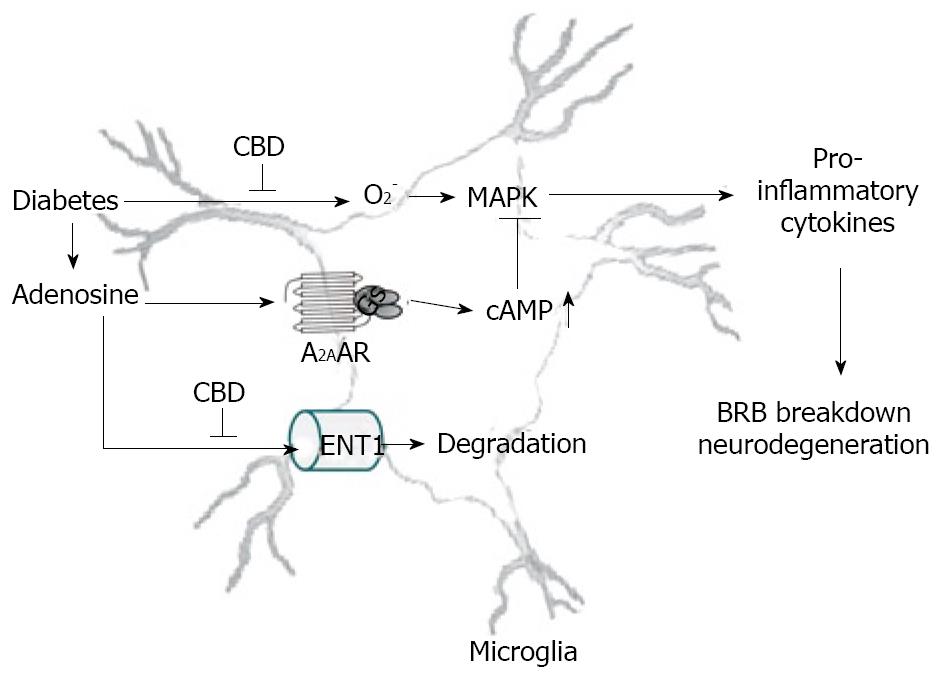Copyright
©2010 Baishideng.
World J Diabetes. Mar 15, 2010; 1(1): 12-18
Published online Mar 15, 2010. doi: 10.4239/wjd.v1.i1.12
Published online Mar 15, 2010. doi: 10.4239/wjd.v1.i1.12
Figure 1 The best-known cannabinoids from marijuana.
(-)-Δ9-tetrahydrocannabinol (THC), but not cannabinol or (-)-cannabidiol (CBD), is known to exert psychotropic effects.
Figure 2 The hypothetical mechanism of anti-inflammation effect CBD in diabetic retinopathy.
Diabetes causes release of adenosine and pro-inflammatory cytokines via superoxide formation and MAPK activation, leading to DR. Adenosine-initiated anti-inflammation via A2AAR-Gs-cAMP signaling is terminated rapidly due to adenosine reuptake by equilibrative nucleoside transporter (ENT) and subsequent metabolism. CBD blocks superoxide formation and inhibits adenosine reuptake via inhibiting ENT1, thereby activating A2AAR-Gs-cAMP signaling.
- Citation: Liou GI. Diabetic retinopathy: Role of inflammation and potential therapies for anti-inflammation. World J Diabetes 2010; 1(1): 12-18
- URL: https://www.wjgnet.com/1948-9358/full/v1/i1/12.htm
- DOI: https://dx.doi.org/10.4239/wjd.v1.i1.12














